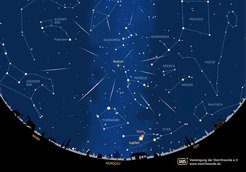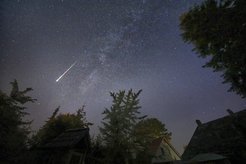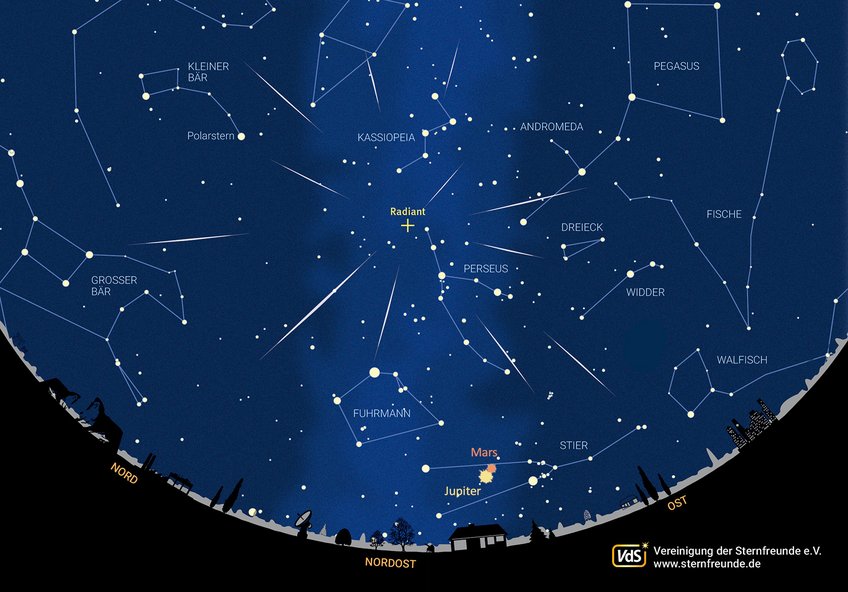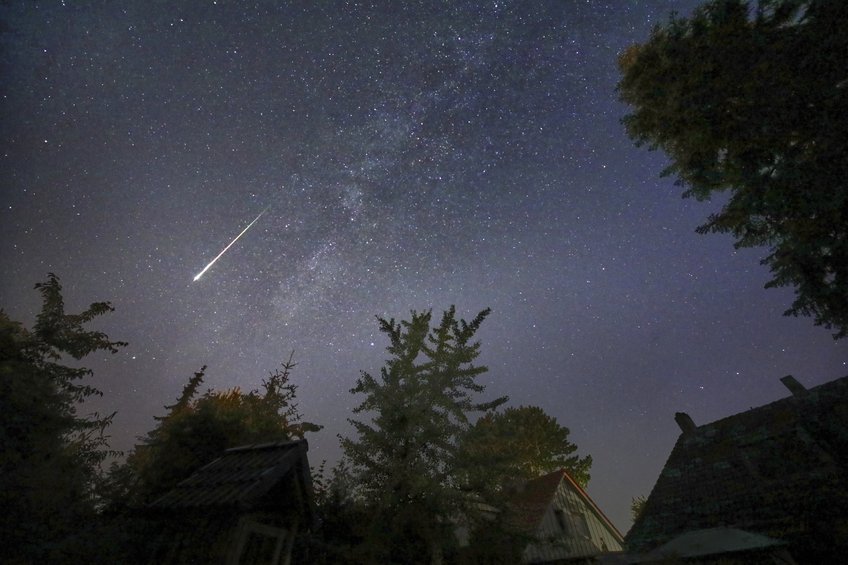The Perseids: Shooting stars in mild summer nights
Summer, Sun, Perseids: Every year, significantly higher numbers of meteors can be seen at night in mid-August. During this time, the Earth passes through a swarm of cosmic dust particles on its orbit, which result in streaks of light as they enter Earth's atmosphere. In 2024, most shooting stars can be seen on 12 August early in the morning and during the night of 12 to 13 August. Under optimal conditions, meteors can be seen darting across the sky about every two minutes.
Midsummer is meteor time: On its orbit around the Sun, the Earth crosses the path of comet 109P/Swift-Tuttle, which was discovered by Lewis Swift and Horace Tuttle in 1862. Along its orbit, the comet leaves particles behind on each return every 133 years, which in turn become visible as shooting stars when they evaporate in Earth's atmosphere. In reality, it is not the particles themselves that glow but the air around them, which is heated by friction when the particles are slowed down as they fall through the air.
The shooting stars that can be traced back to the comet Swift-Tuttle form a meteor shower. They seem to come from a spot in the constellation Perseus, not far from Cassiopeia, and from there spread across the entire sky. These meteors are therefore called the Perseids. The point of emission of a meteor shower is is called the radiant.

The Perseids are a very reliable meteor shower that produces a noticeably higher number of shooting stars over days and weeks every year. The first Perseids appear in the sky as early as the end of July. The number of shooting stars then continues to increase until 12 August and then declines again towards the end of the month. This year, the Perseids reach their peak in the afternoon hours of 12 August, i.e. at a time when it is still daylight in Europe and no meteors are visible.
However, during the nights around the maximum, i.e. from 11 to 12 August and from 12 to 13 August, up to 20-30 shooting stars per hour can still be observed. The waxing moon sets before midnight and as it is very low above the horizon, so it causes only little illumination. The Perseids often show comparably bright meteors that are visible in the moonlight.

As Perseus is actually a typical autumn and winter constellation, in summer it is still low above the eastern horizon in the evening and only rises higher and higher as the night progresses. This means that you generally see more shooting stars early in the morning. Then two bright planets also meet in the east: Jupiter and Mars can be found only about two full moon diameters apart near the open star cluster of the Hyades in the constellation of Taurus.
If you want to look for the Perseids, you should ideally go to a place with a free view of the horizon without light pollution and make yourself comfortable with a deckchair, sleeping mat or picnic blanket. Optical aids such as binoculars or telescopes are not necessary.

